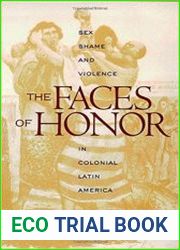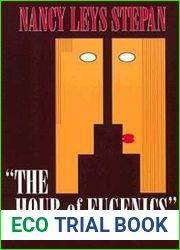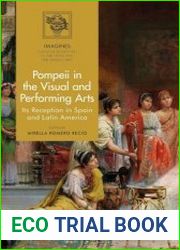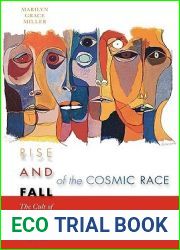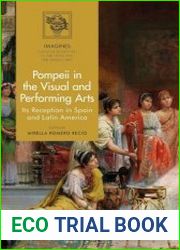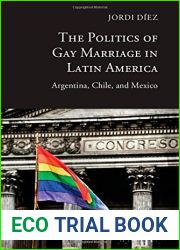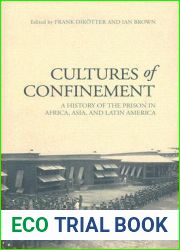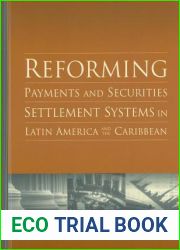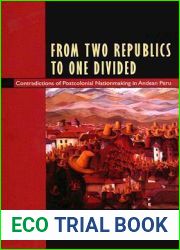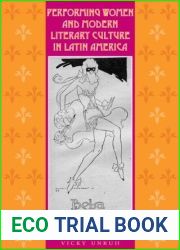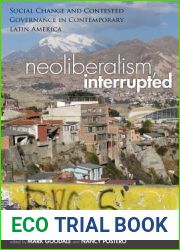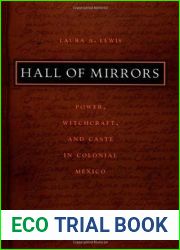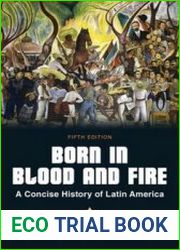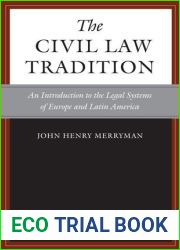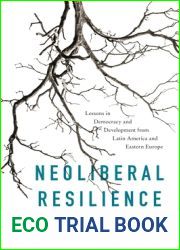
BOOKS - On Art, Artists, Latin America, and Other Utopias (Joe R. and Teresa Lozano L...

On Art, Artists, Latin America, and Other Utopias (Joe R. and Teresa Lozano Long Series in Latin American and Latino Art and Culture)
Author: Luis Camnitzer
Year: October 1, 2009
Format: PDF
File size: PDF 2.5 MB
Language: English

Year: October 1, 2009
Format: PDF
File size: PDF 2.5 MB
Language: English

The Plot: Luis Camnitzer, a renowned artist, educator, curator, and critic, has been writing about contemporary art since he left his native Uruguay in 1964 for a fellowship in New York City. As a transplant from the periphery to the center, Camnitzer has had to confront fundamental questions about making art in the Americas, such as "What is Latin American art?" and "How does it relate to art created in New York and Europe?" These questions have been an integral part of his artistic project, and have led him to develop an idiosyncratic art history that reflects his own place in the picture. In this volume, Camnitzer's most thought-provoking essays and texts are gathered, which explore themes such as art world systems versus artistic commitment, and the possibilities for artistic agency. The first part of the book focuses on the theme of translation, with Camnitzer asking questions such as "What is Latin America?" and "Who is the artist there and here?" The second section of the book is more historically oriented, exploring little-known moments, works, and events that compose the legacy that Camnitzer draws on and offers to his readers.
Луис Камнитцер, известный художник, педагог, куратор и критик, пишет о современном искусстве с тех пор, как он покинул родной Уругвай в 1964 году для стипендии в Нью-Йорке. В качестве пересадки с периферии в центр Камнитцеру пришлось столкнуться с фундаментальными вопросами о создании искусства в Северной и Южной Америке, такими как «Что такое латиноамериканское искусство?» и «Как оно соотносится с искусством, созданным в Нью-Йорке и Европе?». Эти вопросы были неотъемлемой частью его художественного проекта, и привели его к разработке своеобразной истории искусства, которая отражает его собственное место в картине. В этом томе собраны самые заставляющие думать эссе и тексты Камнитцера, которые исследуют такие темы, как системы мира искусства против художественной приверженности и возможности художественного агентства. Первая часть книги посвящена теме перевода, при этом Камнитцер задает такие вопросы, как «Что такое Латинская Америка?» и «Кто такой художник там и здесь?». Второй раздел книги более исторически ориентирован, исследуя малоизвестные моменты, произведения и события, составляющие наследие, которое Камнитцер черпает и предлагает своим читателям.
Luis Kamnitzer, célèbre artiste, enseignant, conservateur et critique, écrit sur l'art contemporain depuis qu'il a quitté son Uruguay natal en 1964 pour une bourse à New York. En tant que transplantation de la périphérie vers le centre, Kamnitzer a dû faire face à des questions fondamentales sur la création de l'art dans les Amériques, telles que « Qu'est-ce que l'art latino-américain ? » et « Comment est-il lié à l'art créé à New York et en Europe ? ». Ces questions faisaient partie intégrante de son projet artistique et l'ont amené à développer une histoire de l'art particulière qui reflète sa propre place dans la peinture. Ce volume rassemble les essais et textes les plus évocateurs de Kamnitzer, qui explorent des thèmes tels que les systèmes du monde de l'art contre l'engagement artistique et la possibilité d'une agence artistique. La première partie du livre est consacrée au thème de la traduction, et Kamnitzer pose des questions telles que « Qu'est-ce que l'Amérique latine ? » et « Qui est l'artiste là-bas et ici ? ». La deuxième partie du livre est plus orientée historiquement, explorant les moments peu connus, les œuvres et les événements qui constituent l'héritage que Kamnitzer tire et offre à ses lecteurs.
Luis Kamnitzer, un reconocido pintor, profesor, curador y crítico, ha estado escribiendo sobre arte contemporáneo desde que dejó su Uruguay natal en 1964 para una beca en Nueva York. Como trasplante de la periferia al centro, Kamnitzer tuvo que hacer frente a preguntas fundamentales sobre la creación del arte en las Américas, como «Qué es el arte latinoamericano?» y «Cómo se relaciona con el arte creado en Nueva York y ?». Estas cuestiones fueron parte integral de su proyecto artístico, y le llevaron a desarrollar una peculiar historia del arte que refleja su propio lugar en la pintura. Este volumen recoge los ensayos y textos más que hacen pensar a Kamnitzer, que exploran temas como los sistemas del mundo del arte frente al compromiso artístico y las posibilidades de la agencia artística. La primera parte del libro trata el tema de la traducción, con Kamnitzer haciendo preguntas como «Qué es América Latina?» y «Quién es el artista allí y aquí?». La segunda sección del libro está más orientada históricamente, explorando momentos poco conocidos, obras y eventos que conforman el legado que Kamnitzer dibuja y ofrece a sus lectores.
Luis Kamnitzer, um famoso artista, educador, supervisor e crítico, escreve sobre arte contemporânea desde que deixou o Uruguai em 1964 para uma bolsa de estudos em Nova York. Como transplante da periferia para o centro, Kamnitzer enfrentou questões fundamentais sobre a criação de arte nas Américas, como «O que é a arte latino-americana?» e «Como se relaciona com a arte criada em Nova York e na ?». Essas questões foram parte integrante de seu projeto artístico, e o levaram a desenvolver uma história de arte que reflete seu próprio lugar no quadro. Este volume reúne os ensaios e textos mais animadores de Kamnitzer que exploram temas como sistemas do mundo da arte contra o compromisso artístico e a capacidade da agência artística. A primeira parte do livro é sobre tradução, e Kamnitzer faz perguntas como «O que é a América Latina?» e «Quem é o artista lá e cá?». A segunda seção do livro é mais histórica, explorando os momentos pouco conhecidos, as obras e os eventos que constituem o legado que Kornitzer recebe e oferece aos seus leitores.
Louis Kamnitzer, famoso artista, educatore, curatore e critico, scrive di arte contemporanea da quando ha lasciato l'Uruguay nel 1964 per una borsa di studio a New York. Come trapianto dalla periferia al centro, Kamnitzer ha dovuto affrontare questioni fondamentali sulla creazione d'arte in Nord e Sud America, come «Cos'è l'arte ispanica?» e «Come funziona con l'arte creata a New York e in ?». Queste questioni erano parte integrante del suo progetto artistico, e lo hanno portato a sviluppare una sorta di storia dell'arte che riflette il suo posto nel quadro. Questo volume raccoglie i saggi e i testi di Camnitzer più riflettenti, che esplorano temi come i sistemi del mondo dell'arte contro l'impegno artistico e le opportunità dell'agenzia artistica. La prima parte del libro è dedicata alla traduzione, mentre Camnitzer fa domande come «Cos'è l'America Latina?» e «Chi è l'artista là e qui?». La seconda sezione del libro è storicamente più incentrata, esplorando momenti, opere ed eventi poco conosciuti che costituiscono l'eredità che Kaminitzer prende e offre ai suoi lettori.
Luis Camnitzer, ein bekannter Künstler, Pädagoge, Kurator und Kritiker, schreibt seit seiner Abreise aus seiner Heimat Uruguay 1964 für ein Stipendium in New York über zeitgenössische Kunst. Als Transfer von der Peripherie ins Zentrum musste sich Camnitzer grundlegenden Fragen zur Kunstschaffung in Nord- und Südamerika stellen, wie „Was ist lateinamerikanische Kunst?“ und „Wie verhält sie sich zu in New York und geschaffener Kunst?“. Diese Fragen waren integraler Bestandteil seines künstlerischen Projekts und führten ihn dazu, eine Art Kunstgeschichte zu entwickeln, die seinen eigenen Platz im Bild widerspiegelt. Dieser Band versammelt die denkfreudigsten Essays und Texte von Camnitzer, die Themen wie die Systeme der Kunstwelt gegen das künstlerische Engagement und die Möglichkeiten einer künstlerischen Agentur untersuchen. Der erste Teil des Buches widmet sich dem Thema Übersetzung, wobei Kamnitzer Fragen stellt wie „Was ist Lateinamerika?“ und „Wer ist der Künstler da und hier?“. Der zweite Abschnitt des Buches ist eher historisch orientiert und untersucht die wenig bekannten Momente, Werke und Ereignisse, die das Erbe ausmachen, das Kamnitzer zieht und seinen sern anbietet.
Luis Camnitzer, znany artysta, pedagog, kurator i krytyk, pisze o sztuce współczesnej, odkąd opuścił swój rodzinny Urugwaj w 1964 na stypendium w Nowym Jorku. Jako przeniesienie z peryferii do centrum, Kamnitzer musiał zająć się fundamentalnymi pytaniami dotyczącymi tworzenia sztuki w Ameryce, takimi jak „Czym jest sztuka latynoamerykańska?” i „Jak ona odnosi się do sztuki stworzonej w Nowym Jorku i Europie?”. Pytania te były integralną częścią jego projektu artystycznego i doprowadziły go do opracowania osobliwej historii sztuki, która odzwierciedla jego własne miejsce w obrazie. Ten tom kompiluje najbardziej prowokujące do myślenia eseje i teksty Kamnitzera, które badają takie tematy jak systemy art world kontra zaangażowanie artystyczne i możliwości agencji artystycznej. Pierwsza część książki dotyczy tematu tłumaczenia, a Kamnitzer zadaje pytania: „Co to jest Ameryka Łacińska?” i „Kto jest artystą tutaj i tam?”. Druga część książki jest bardziej zorientowana historycznie, odkrywa mało znane chwile, dzieła i wydarzenia, które tworzą dziedzictwo, które Kamnitzer rysuje i oferuje swoim czytelnikom.
לואיס קמניצר, אמן מפורסם, מחנך, אוצר ומבקר, כותב על אמנות עכשווית מאז שעזב את אורוגוואי בשנת 1964 לטובת מלגה בניו יורק. כהעברה מהפריפריה למרכז, קמניצר היה צריך להתמודד עם שאלות בסיסיות על יצירת אמנות ביבשת אמריקה, כמו ”מהי אמנות אמריקה הלטינית?” ו ”איך זה קשור לאמנות שנוצרה בניו יורק ובאירופה?”. שאלות אלו היו חלק בלתי נפרד מהפרויקט האמנותי שלו, והובילו אותו לפתח היסטוריה מוזרה של האמנות המשקפת את מקומו בתמונה. כרך זה מרכיב את החיבורים והטקסטים מעוררי המחשבה ביותר של קמניצר, אשר חוקרים נושאים כגון מערכות עולם אמנות מול מחויבות אמנותית ואפשרויות של סוכנות אמנותית. החלק הראשון של הספר עוסק בנושא התרגום, כאשר קמניצר שואל שאלות כגון ”מהי אמריקה הלטינית?” ו ”מיהו אמן פה ושם?”. החלק השני של הספר מוכוון יותר היסטורית, חוקר רגעים, עבודות, ואירועים שמרכיבים את המורשת שקמניצר משרטט ומציע לקוראיו.''
Ünlü bir sanatçı, eğitimci, küratör ve eleştirmen olan Luis Camnitzer, New York'ta bir burs için 1964 yılında Uruguay'dan ayrıldığından beri çağdaş sanat hakkında yazıyor. Çevreden merkeze bir aktarım olarak Kamnitzer, Amerika'da sanatın yaratılmasıyla ilgili "Latin Amerika sanatı nedir?'ve" New York ve Avrupa'da yaratılan sanatla nasıl bir ilişkisi var?'gibi temel sorularla uğraşmak zorunda kaldı. Bu sorular sanatsal projesinin ayrılmaz bir parçasıydı ve resimdeki kendi yerini yansıtan kendine özgü bir sanat tarihi geliştirmesine yol açtı. Bu cilt, Kamnitzer'in sanat dünyası sistemlerine karşı sanatsal bağlılık ve sanatsal ajansın olanakları gibi temaları araştıran en düşündürücü makalelerini ve metinlerini derlemektedir. Kitabın ilk bölümü çeviri konusunu ele alıyor, Kamnitzer "Latin Amerika nedir?'ve" Orada burada sanatçı kimdir?'gibi sorular soruyor. Kitabın ikinci bölümü, Kamnitzer'in okuyucularına çizdiği ve sunduğu mirası oluşturan az bilinen anları, eserleri ve olayları araştıran daha tarihsel odaklıdır.
لويس كامنيتزر، فنان ومعلم وأمين وناقد مشهور، يكتب عن الفن المعاصر منذ أن غادر مسقط رأسه أوروغواي في عام 1964 للحصول على زمالة في نيويورك. كنقل من المحيط إلى المركز، كان على كامنيتزر التعامل مع الأسئلة الأساسية حول إنشاء الفن في الأمريكتين، مثل «ما هو فن أمريكا اللاتينية ؟» و «كيف يرتبط بالفن الذي تم إنشاؤه في نيويورك وأوروبا ؟». كانت هذه الأسئلة جزءًا لا يتجزأ من مشروعه الفني، وقادته إلى تطوير تاريخ فني غريب يعكس مكانته في الصورة. يجمع هذا المجلد مقالات ونصوص كامنيتزر الأكثر إثارة للتفكير، والتي تستكشف موضوعات مثل أنظمة عالم الفن مقابل الالتزام الفني وإمكانيات الوكالة الفنية. يتناول الجزء الأول من الكتاب موضوع الترجمة، حيث يطرح كامنيتزر أسئلة مثل «ما هي أمريكا اللاتينية ؟» و «من هو الفنان هنا وهناك ؟». القسم الثاني من الكتاب أكثر توجهاً من الناحية التاريخية، حيث يستكشف اللحظات والأعمال والأحداث غير المعروفة التي تشكل الإرث الذي يرسمه كامنيتزر ويقدمه لقرائه.
유명한 예술가, 교육자, 큐레이터 및 비평가 인 Luis Camnitzer는 1964 년 뉴욕에서 친교를 위해 우루과이를 떠난 이후 현대 미술에 대해 글을 쓰고 있습니다. Kamnitzer는 주변에서 센터로 이전하면서 "라틴 아메리카 예술은 무엇입니까?" 와 같은 아메리카 대륙의 예술 창조에 관한 근본적인 질문을 처리해야했습니다. "뉴욕과 유럽에서 만들어진 예술과 어떤 관련이 있습니까?" 이 질문들은 그의 예술 프로젝트에서 없어서는 안될 부분이었으며, 그림에서 자신의 위치를 반영하는 독특한 예술 역사를 개발하게했습니다. 이 책은 Kamnitzer의 가장 생각을 자극하는 에세이와 텍스트를 편집하여 예술 세계 시스템 대 예술적 헌신 및 예술 기관의 가능성과 같은 주제를 탐구합니다. 이 책의 첫 번째 부분은 번역 주제를 다루며 Kamnitzer는 "라틴 아메리카는 무엇입니까?" 와 같은 질문을합니다. "여기저기서 예술가는 누구입니까?" 이 책의 두 번째 부분은보다 역사적으로 지향적이며 Kamnitzer가 독자에게 제공하고 제공하는 유산을 구성하는 거의 알려지지 않은 순간, 작품 및 사건을 탐구합니다.
著名藝術家,教育家,策展人和評論家路易斯·卡姆尼策(Luis Kamnitzer)自1964離開家鄉烏拉圭在紐約獲得獎學金以來,就一直在寫當代藝術。作為從外圍轉移到中心的轉移,Kamnitzer必須面對有關在美洲創作藝術的基本問題,例如「什麼是拉丁美洲藝術?」和「它如何與在紐約和歐洲創作的藝術相關聯?」。這些問題是他藝術項目不可或缺的一部分,並導致他發展出一種藝術史,反映了他在繪畫中的地位。本卷匯集了Kamnitzer最引人入勝的論文和文本,探討了諸如藝術世界體系與藝術承諾和藝術代理機會之類的主題。該書的第一部分涉及翻譯主題,Kamnitzer提出了諸如「什麼是拉丁美洲?」和「誰是那裏的藝術家?」等問題。該書的第二部分在歷史上更具針對性,探索了鮮為人知的時刻,作品和事件,這些事件構成了Kamnitzer汲取並提供給讀者的遺產。











